
If you’ve ever had a squash or pumpkin plant with one or more runners that suddenly wilt and then die, it was mostly likely infested by squash vine borer. This is an insect that spends its immature, or larval stage, tunneling inside the stems of squash plants. Gardeners often don’t realize anything is wrong until the whole plant starts wilting, and by then, it’s generally too late to save the plant.
Squash vine borer (Melittia cucurbitae) is a native sesiid (clear-winged) moth that occurs throughout North America east of the Rocky Mountains, from Canada to South America. It attacks both wild and cultivated cucurbits. It cannot complete its development except in summer squash, winter squash, or pumpkins and is rarely found in cucumbers or melons. Its feeding affects plant vigor and yield and large infestations will kill plants.
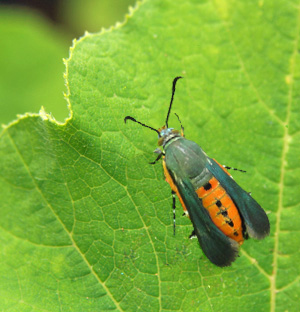
The adult squash vine borer is a day-flying moth, with a distinctive superficial appearance more like a wasp than a moth. It has a thick, dark grey or dull orange abdomen marked with black dots and hairy hind legs with orange markings, with the wings folded back over the body when at rest. The front wings are a metallic greenish-black but the hind wings are clear (lack scales) with dark veins – which only become visible when they fly. They are ¾-to 1-inch long with 1-to 1½-inch wingspan. The moths tend to fly slowly in zig-zags around plants, resting on leaves in the evening. Moths are active for about one month.
Females lay up to 250 small flattened, oval, and dull-red to brown eggs individually, rather than in groups, on the base of plants, leaf stalks, and vines which are almost impossible to spot. After the eggs hatch in 7-15 days, the larvae, or caterpillars, immediately tunnel into the stems or base of the plant to feed.
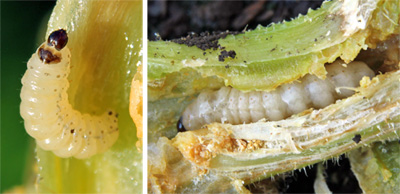
Each larva has a cream colored, wrinkled body and brown head. They generally occur in the base of the plant but later in the season they may be found throughout the plant and even in the fruit. Their feeding within the vines destroys the vascular tissues of the plant, preventing water movement and nutrient transfer, which leads to the characteristic wilting. Borer damage weakens plants providing the opportunity for secondary infection. In home plantings, infested vines are often completely girdled and usually become rotten and die.
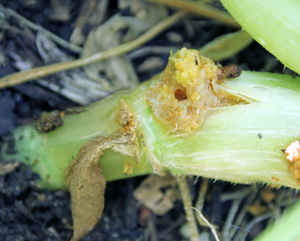
The larvae feed internally for 2-4 weeks, growing up to one inch in length, then leave the stem to burrow into the soil. As they feed, they push their sawdust-like fecal matter (frass) out of holes in the side of the stem near the wilting point. This is what most people notice first and the best evidence of infestation by this insect pest. If the stem is cut open, one or more larvae will be inside.
Squash vine borer overwinters as either a full-grown larva or as a brown pupa, hidden an inch or two down in the soil enclosed in a tough, dirt-covered, dark silken cocoon about 3/4 inch long. In the spring, overwintering larvae pupate and the adults emerge in June and July,
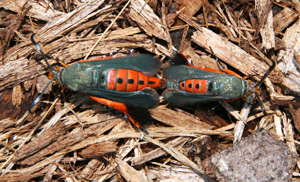
about the time squash plants begin to produce vines. Moth flight continues through mid-August. In Wisconsin there is only one generation each year but in southern parts of its range there are two generations per year.
Squash vine borer will attack many different types of squash but there are differences in susceptibility. Hollow stemmed cucurbits, such as pumpkin, and very susceptible while solid stemmed ones are less so.
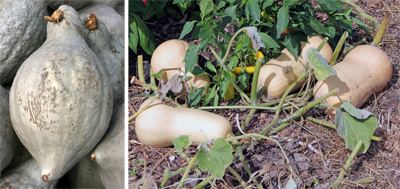
For example, the winter squash ‘Hubbard’ is very susceptible while ‘Butternut’ is somewhat resistant. If you have consistently had a problem with squash vine borer, it may be best to avoid growing the more susceptible types for a few years in an attempt to reduce pest populations (unless all your neighbors are growing zucchini, in which case this strategy will not work).
In the home garden, some cultural or physical controls can help manage this pest.
- Cover the base of the plant with some sort of barrier. Aluminum foil, pieces of nylon pantyhose, strips of floating row cover, and other materials are often suggested but are difficult to position and keep in place and rarely completely cover the area so moths can still lay eggs on the plants.
- Wiping the stems with a damp cloth periodically (every 3-5 days) theoretically will remove the eggs before they hatch. Or inspect the stems and bases visually and destroy any eggs seen.
- Catch and destroy moths when they are resting on the upper side of leaf bases (usually in the early morning or around dusk).
- Plants should be inspected for early signs of larval feeding. At the first sight of frass, homeowners can carefully slit the vine lengthwise near the damaged area and remove the larvae. These stems should be immediately covered with soil. This will help, but it is difficult to find and remove all larvae. Or a stiff wire, needle, or toothpick can be used to try to kill the borer without slitting the vine, but it is hard to know that the larva(e) were actually stabbed.
- For vining (not bush) varieties, try burying a few nodes along each vine so the plant will root at these nodes and less the impact of the pest if it does infest the base of the vine.
- Heavy fertilization to promote rapid growth may help offset injury, especially when used in conjunction with other cultural controls.
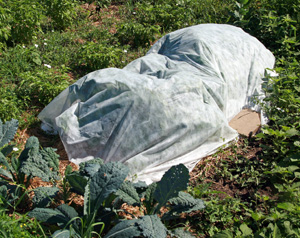
Plants can be covered with floating row cover but only where squash didn’t grow the previous year. If squash vine borer pupae are in the soil underneath it, this technique will not be effective. Another complication with this approach is that the flowers will need to be pollinated by hand in order to set fruit. Later in the season when the adults are no longer flying (generally mid-August) covers can be removed for open pollination.
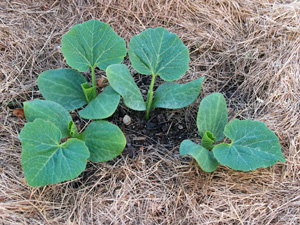
If practical, use succession planting, putting in new plants every 2-3 weeks, and harvest fruits until the plants succumb to the borers, then remove them. If you also want to reduce the pest population, destroy the oldest plants after the stems are infested (and presumably after some harvest of fruit) but before the larvae leave the stems to pupate (usually about a week before the leaves would start to wilt from the damage). Cut off the lower portion of the plant and destroy the larvae in it by drowning in a bucket of water, putting into a plastic bag to “cook” in the sun for a few weeks, or any other method that will kill any larvae inside. The rest of the plant can be put in the compost. This staggering planting will also allow some plantings to escape heaviest egg-laying pressure.
There are parasitic wasps which attack the eggs but these are not common enough to provide effective control. Some predators may attack the eggs, larvae, or pupae, but do not cause significant mortality.
Insecticide treatments are aimed at killing the newly hatched larvae before they tunnel into the vines. The insecticide has to cover the vines, so sprays need to penetrate the canopy. In a small garden with just a few plants applications are best directed at the base of the plant, crowns, and runners rather than on the leaves (and definitely avoid treating the flowers as insecticides will kill pollinators). Some insecticides will also kill the adults. Day degree calculations can be used to predict when adult moths will begin flying to determine when protection of the plants will be necessary. Adult emergence occurs at about 1000 DD (base 50), so plants need to be protected before then. As a general rule moths begin flying in early summer. Additional treatments will need to be made on a regular basis or any time the material has likely been removed (such as after a rainstorm or overhead watering).
– Susan Mahr, University of Wisconsin – Madison





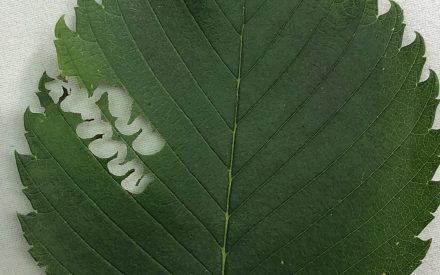 Elm Zigzag Sawfly
Elm Zigzag Sawfly ▶ Watch: How do Pesticides Affect Pollinators and Songbirds in Your Yard
▶ Watch: How do Pesticides Affect Pollinators and Songbirds in Your Yard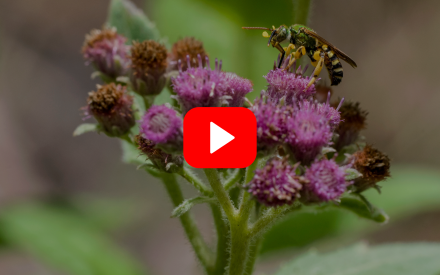 ▶ Watch: Pollinator Gardens: Plant Selection and Garden Care
▶ Watch: Pollinator Gardens: Plant Selection and Garden Care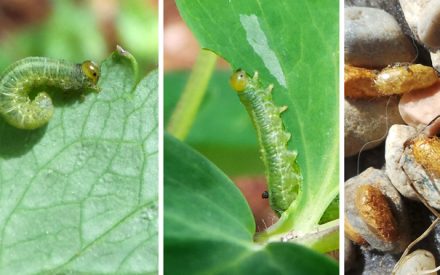 Strategies for Identifying and Managing Insect Pests
Strategies for Identifying and Managing Insect Pests


